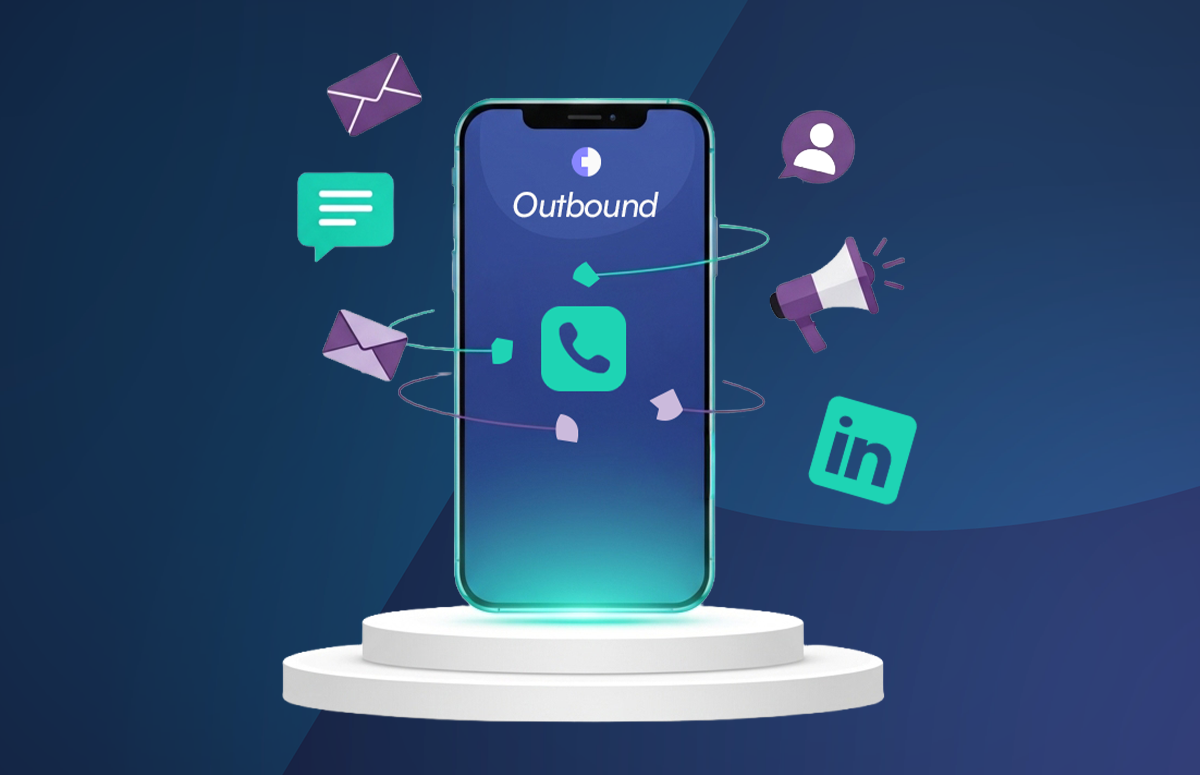The Only Cold Calling Script You Need for Software Sales
The 7 sections of a software sales cold calling script:
Sam Gibbons is Cognism’s Enterprise Account Executive.
He joined the company in February 2020 as a Sales Development Representative (SDR). In this role, he cold-called prospects, pitched our products, and scheduled meetings.
Sam’s customer base was software sales - a category which encompasses IT and tech companies across the world.
When cold calling his prospects, Sam used a script he developed himself.
And as his numbers show, it was perfectly geared towards IT and tech leaders. With this software sales cold calling script, Sam...
- Exceeded target in March 2020, which, due to COVID-19, was one of the most challenging months ever for B2B sales teams.
- Booked 33 demos since 1st March 2020, which worked out to exactly a demo a day for 33 working days.
We present Sam’s software sales script to you now so that you, too, can succeed in prospecting to this audience. The script aims to gauge interest and qualify while also giving the cold call a structure and consistent flow.
This is the ultimate cold calling script for software sales! Scroll 👇 for the good stuff.
The 7 sections of a software sales cold calling script
1. The intro
Start your cold call script with a friendly, conversational introduction. Always give the customer your name and the company you represent.
“Hey (name), Sam from Cognism here. How are you?”
If the prospect answers positively, you can respond with...
“Great! I appreciate I’ve called you out of the blue. Is now a bad time?”
The logic in asking “Is now a bad time?” is that prospects naturally want to say “no.”This question sets them up to do so.
Sam got this tip from Never Split the Difference, the bestselling book by Christopher Voss.
2. The opening pitch
Sam designed his sales pitch to give the prospect some context about what Cognism does, without giving away the key value proposition.
The idea is not to reveal too much at the beginning - you want the prospect to have some follow-up questions.
“Fantastic! So (name), I just wanted to give you a quick call as we’re currently doing lots of work with (tech/software company of a similar size) as well as a variety of other tech companies like you guys.”
“We help our clients by providing them with an in-house tool. This tool generates direct contact information for key decision-makers in their target markets..”
A good sales strategy is to demonstrate that you’ve done your research on the prospect’s B2B company. You can do this by quoting the types of industries that they’re prospecting to!
Like so:
“I can see that you target (industry/industries). How are you finding targeted leads from within that sector/those sectors?”
Sam ends his pitch with a simple, open-ended question. It provides plenty of scope for a detailed customer answer.
3. The discovery
Discovery calls are important for two reasons:
- They enable you to determine whether or not the potential buyer is a good fit, helping you to qualify in or out.
- They help you to understand their current sales process, meaning you can better explain how your solution adds value.
Sam uses several qualifying questions to discover more about his prospects. Here are some examples:
“How are you generating your leads?”
The prospect may reply by quoting LinkedIn, a B2B data provider, networking, or they might not generate their own leads; they may thrive off of referrals.
Whatever the customer’s answer, you can use it to draw a direct comparison between their current process and your solution. Think about how your solution can solve the biggest challenges in that process or speed it up.
It’s best not to be too general, though. Be specific to the prospect and their industry. Your message must deliver value to them.
“Which channels do you use to reach out to your leads?”
The prospect may answer with one, some or all of the following: phone calls, email campaigns, social media.
Use the information they give you to tailor your cold call script. For example, if their main outreach channel is email, then you don’t want to be talking about the accuracy of your phone numbers!
Instead, you’ll want to emphasise your product’s effectiveness in email marketing. At Cognism, our message would be that our validated email addresses have 95-98% deliverability, which means a lower bounce rate.
Sam recommends having some stats on hand when you cold call prospects. They’re a good and quick way to demonstrate value.
“What’s your target market in terms of job title/location/company size?”
This is a good question to ask, as it enables you to get specific.
Let’s say the prospect replies with: “HR directors working in UK tech.”
Instead of replying with:
“We have 400 million B2B profiles which you can segment down to find your target market...”
You can say:
“We have 400 million B2B profiles, which you can segment down to find an extensive list of HR directors working in the UK tech space...”
You can see that your discovery questions must always have a purpose - to resonate with the prospect and bring them back to your product’s value.
4. The second pitch
This is the stage in your cold call where you can pitch again, this time in more detail. Explain how your solution addresses the prospect’s pain or common challenges.
Base the second sales pitch on everything you learned in the discovery phase. The more relevant it is to the prospect, the more engaged they’ll be!
Sam’s second pitch looks like this:
“Fantastic! So, (name), to give you a little more context, Cognism is the world’s largest GDPR-compliant database consisting of over 400 million B2B profiles.”
“How it works, is you would run highly-targeted searches for (target market: e.g. HR Directors in UK tech).”
“This would generate a customer contact list, and for each individual, we would provide you with (data points relevant to them based on the lead sources they use: e.g. if they only use emails because their outbound consists of email marketing campaigns) email addresses with 95-98% deliverability.”
5. The value
The next step is to immediately explain why your current customers have switched from their old process to using your product. You also need to show the value that doing this has added to them.
Sam does it like this:
“The main reason why our clients have typically moved from (current process: e.g. LinkedIn) is because (explain how our solution can add value).”
A top tip when talking to tech and software companies - put the emphasis on your product’s technical aspects.
Again, it’s about tailoring your script to your audience.
6. The case study
Strengthen your cold call with some social proof that’s relevant to your prospect. Pick out a case study from a customer in the prospect’s industry. Describe the results they achieved using your solution.
Sam sets it out like this:
“We’re actually working with (similar client) right now. They managed to achieve (result) in (time frame).”
7. The close
Some say this is the trickiest part of a cold call! But really, there’s not much to it. Simply be assertive and clear.
A good idea is to suggest that your cold call is actually a waste of the prospect’s time - wouldn’t they rather see a product demo?
“Look, (name), rather than me rambling on at you, would you be totally against seeing the platform on a 20-minute demo?”
“I could run some personalised searches for you based on your target market and show you the quality and quantity of data that we have.”
Again, prospects naturally want to say “no,” so by asking, “Would you be totally against seeing the platform?” you’re putting the prospect in a position of authority.
Top sales software tips
Sam gave us some other, more general tips to help you with your software sales cold calls.
- Say the prospect’s name a lot to build rapport (as recommended in How to Win Friends and Influence People by Dale Carnegie).
- Be an active listener - repeat what the prospect says back to them. This shows you’re listening and engaged. For instance: “Okay, so your sales team are finding their leads through LinkedIn and reaching out via cold calling and email. Fantastic, so...(next questions/follow up with how you can add value.)”
- Tonality - be aware of how you speak. Don’t be robotic! Develop a conversation that is warm and comfortable for you and your prospect.
- Refer to any of your customers that are similar to the prospect’s business - you can base this on company size, industry, location, etc.
- If possible, back up your cold call with case studies. Create a “Jones effect” around your product - if the prospect’s peers are using it, they’ll want to check it out, too!
Software sales pain points
Further to Sam’s tips, we gathered a list of common questions that people ask when looking for SaaS products. These questions are straight from our recorded calls.
- Does your product provide an intuitive user experience?
- What value does this add - why is it worth the selling price?
- How is it going to solve X pain point?
- Why should I go with you and not one of your competitors?
Although providing these answers may seem like the standard process in B2B sales, they’re often overlooked. If you want to close, you must have the answers your prospect wants.
Software sales cold calling: best practices
If you’re looking to create your own cold calling script, we’ve got you covered!
Here are our best practice tips:
Lead in strongly!
You want to grab the prospect’s attention. But how? 🤔
Mention a clear differentiator.
If your company manages IT, mention what you specialise in and focus on how you deliver this message. Your language and your emphasis are essential to generating interest quickly.
Evolve your scripts
Out with the old, in with the new, right?
Creating a feedback loop is essential for evolving your cold calling scripts. Over time, your sales reps will learn what resonates with your prospects.
They’ll tell you what people love, what people hate, what to cut and what to add more of. Never underestimate the power of your feedback loop.
Focus on outcomes, not features
Honestly, the prospect doesn’t care about your brand-new features. Don’t use them as your main value proposition.
Rather, focus on what your product will help the prospect achieve.
Don’t ask close-ended questions
Close-ended questions don’t allow your prospect to elaborate past “yes” and “no”.
If you want to understand their pain points, your cold-calling script MUST include “how,” “why,” and “what” questions.
Beyond this, you need to listen! It’s all good to ask relevant questions, but you also need to listen very carefully when the client replies. What they tell you can be invaluable for objection handling.
Get more cold calling insights
Have you visited Cognism’s SDR Zone?
It’s full of resources for sales managers and sales reps alike - including script and cadence libraries, podcast recordings, training videos and lots more!
Click 👇 to access!

/Cold%20calling%20strategy/cold-calling-strategy-card.webp)

